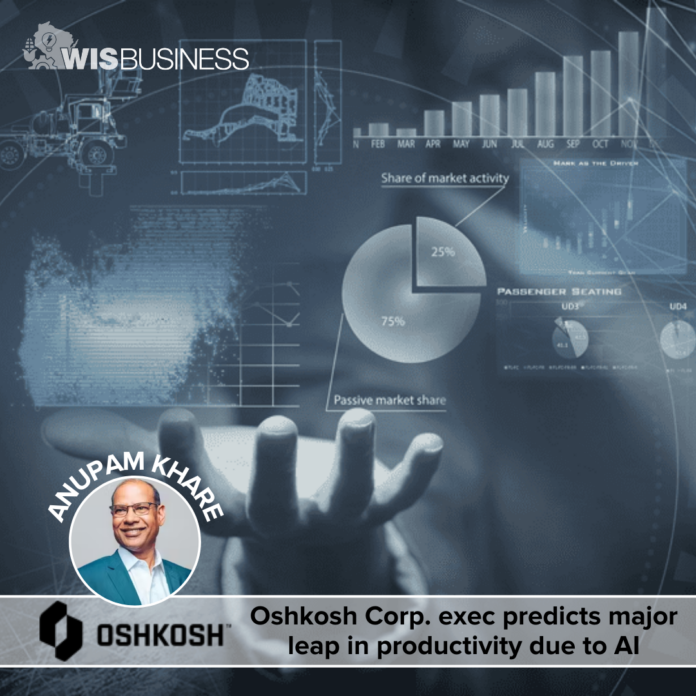Oshkosh Corporation expects to see a significant leap in productivity as the manufacturing business adopts more AI technology.
Anupam Khare, senior vice president and chief information officer for Oshkosh Corp., yesterday discussed the company’s tech-focused strategy during a meeting of the Governor’s Task Force on Workforce and Artificial Intelligence.
While the business has already been incorporating industrial automation for decades, its fledgling relationship with artificial intelligence will take time to scale up in a major way, Khare told task force members. But he underlined its importance for the growing company, which produces military vehicles, specialty trucks and other machinery.
“I think three or four years ago, we were a $7 billion company, now we’re a $10 billion company,” he said. “We have two years of backlog. We have always 500 to 800 opening roles which we are not able to fill. We need efficiencies and productivity.”
The company began incorporating AI in 2019, starting with automating simple tasks and then moving to virtual conversation “bots” that facilitate employee contact with the company’s service desk as well as customer service call centers. After that, Oshkosh Corp. began using AI for predictive analytics, processing massive amounts of data to identify patterns.
The company is employing AI data analytics to optimize shipping container utilization, reducing the likelihood of human error while improving how that space is being used, Khare noted. The Parts Alignment and Calculation Tool, or PACT, has resulted in containers being packed 15 times faster along with reduced carbon emissions and transportation costs, according to his presentation.
“We have roughly 200 active algorithms working and making recommendations on many decisions,” he said.
Oshkosh Corp.’s current phase of adoption is focused on generative AI, which can produce sophisticated text, images, videos and more based on user prompts. The business is currently working with Microsoft and California-based OpenAI on this stage, Khare said.
One application aims to streamline the work done by Oshkosh’s more than 50 buyers, who routinely email and call thousands of parts vendors.
“Now we have a bot which basically writes an email for them, follows up and the email comes, the bot reads the email and does the job,” Khare said. “So we were spending 100 hours a day on just follow-up, which our buyers didn’t like. And now this is being done by bots in less than five minutes.”
The business has identified 40 use cases for generative AI, five of which are in development.
Watch a video of the task force meeting at WisconsinEye.






